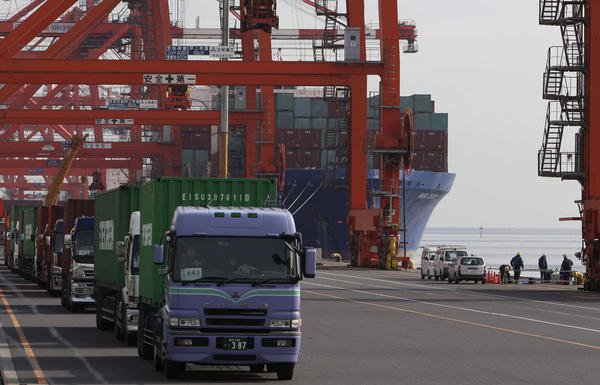
Japan’s monthly trade deficit hit a record in January after its recent aggressive monetary policy stance weakened the yen sharply.
Exports rose in January, the first jump in eight months, as its goods became more affordable to foreign buyers.
However, a weak currency also pushed up its import bill resulting in a monthly trade deficit of 1.6 trillion yen ($17.1 billion), a 10% jump from a year ago.
Japan’s deficit has also been impacted by an increase in fuel imports.
The world’s third-largest economy has seen a rise in fuel imports, as most of Japan’s nuclear reactors continue to remain closed.
Japan’s imports rose 7.3% in January, from a year earlier. One of the biggest jumps was in the import of liquefied petroleum gas (LPG), which surged more than 28%.
Meanwhile, exports rose 6.4%, driven up mainly by shipments of manufactured goods, the customs and tariff bureau said.
Japan’s exports, one of the key drivers of its economic growth, have been hurt by a variety of factors.
Demand from the eurozone, of Japan’s biggest markets, has been hurt by the region’s ongoing debt crisis.

A territorial dispute with China has hit sales of Japanese goods to the country, Japan’s biggest trading partner, over the past few months.
However, the latest data indicated that things may be starting to change.
Japan’s shipments to China raised by 3% in January from a year earlier, the first rise since May.
At the same time, exports to the US, the world’s biggest economy, also jumped 10.9%, further adding to hopes of a recovery in the sector.
Meanwhile, the pace of decline in exports to the European Union also slowed during the month.
There are hopes that as shipments to key markets recover and the yen continues to remain weak, Japan’s export sector may see a sustained recovery.
The yen has dipped nearly 15% against the US dollar since November.
A weak currency helps boost profits of exporters when they repatriate their foreign earnings back home, giving them a much bigger pile of cash to invest at the end of the financial year.
[youtube 10PyxKRSwCY]